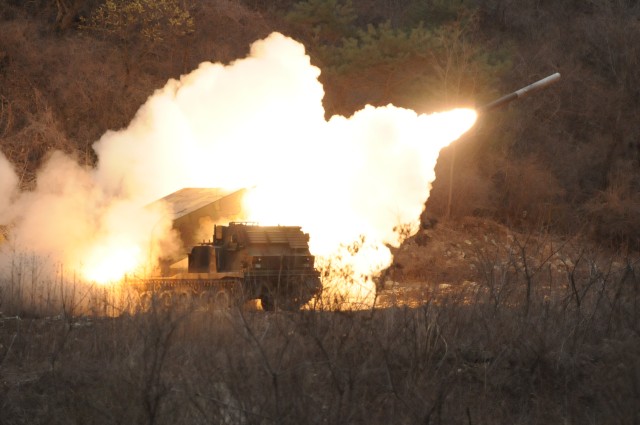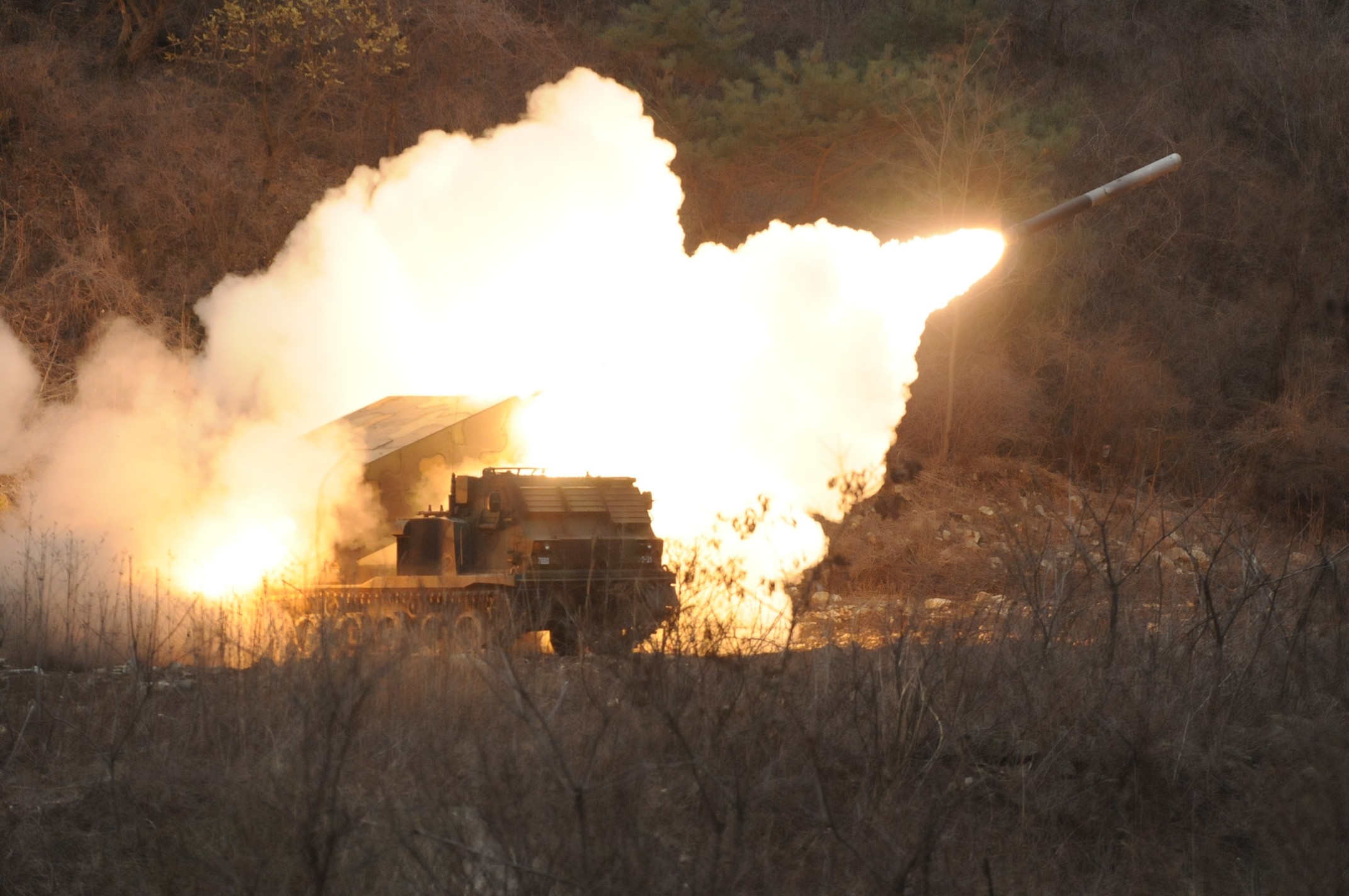The ground shook as an M270 Multiple Launch Rocket System unit rolled by to take its position at firing point three on a chilly, overcast morning in Rocket Valley. The bare valley, still untouched by springtime, served as the launching point for the devastating firepower to be unleashed during a combined live fire exercise for sister MLRS battalions. Artillerymen from 1st Battalion, 38th Field Artillery Regiment, 210th Fires Brigade and the Republic of Korea Army 2000th Field Artillery Battalion, 1st Artillery Brigade, conducted a week-long combined live fire exercise April 18-25.
The main goal of the live fire exercise was to fire in support of a verification test for the Airborne Weapons Surveillance System, an unmanned aerial vehicle that is capable of detecting and identifying surface to surface fire. However, testing the AWSS gave the artillerymen an opportunity to conduct crew qualifications and a combined live fire exercise which challenged the sister battalions on their ability to work together.
"We like to take the maximum advantage of our time when we're out here firing for the AWSS. It gives us the opportunity to conduct Table VIII qualification and training with the ROK Army lets us exercise our real 'go-to-war' mission," said Lt. Col. David Lee, 1-38th FA commander.
At the heart of the 'go-to-war' mission is the ability to communicate not just across the battlefield but also across linguistic and cultural barriers. Staff officers from both battalions met on several occasions to plan and coordinate the training.
"The liaison officer acts as a go-between for the Korean and American tactical operation centers. Our fire control systems are not totally compatible so he has to relay the fire missions orally or in writing to his Korean counterpart and vice versa," said Maj. John Giop, 1-38th FA operations officer. The battalions conducted two combined Digital Sustainment Training events to train the liaison section.
An invaluable asset in communication between the allies and the wartime mission is the Korean Augmentation to the U.S. Army Soldier.
"It is impossible to overvalue what the KATUSAs bring to the team. They break down communication barriers at every part of the exchange between the armies," said Lee.
The physical closeness of the two firing points in Rocket Valley reinforced the ability of the allies to work together.
"This is a unique training opportunity for everyone involved," said Col. Steven Sliwa, 210th Fires commander. "We are firing within walking distance of our Korean counterparts so that we can see how they operate and they can see us in action. This proximity builds confidence so that when we are dispersed on the battlefield we can visualize what we saw in training."
Team building on all levels was a vital part of the exercise. From crew to battery to battalion and then on a U.S.-ROK Army level, the importance of cooperation was never far from the Soldiers' minds.
"The LFX is a win-win for everybody involved. The U.S. and Korean battalions have to pull together and work as a team to get the mission done. As we always say, 'Katchi Kapshida,' but this kind of exercise really takes working together to another level," said Command Sgt. Maj. Antoine Denson of 210th Fires.
The Table VIII qualification part of the exercise was the first time many of the crews worked together.
"My crew fired around 20 rockets this week, and successfully qualified. I really like getting out here and doing my job," said Pvt. Brandon Mooreebe, an MLRS driver of C Btry., 1-38th FA. "There is so much to learn about working as a team and nothing beats the hands-on experience that you can only get in the field."
Working across boundaries to complete a common goal was a vital part to the joint live fire exercise.
"I really want to build on these combined fires in the future. We can verify that our 'go-to-war' plan can be executed at every level," said Sliwa. "Our tactics, techniques and procedures cannot be so different from our Korean counterpart's that we can't fight and win. The training must facilitate a smooth exchange of information between the allies," he said.


Social Sharing